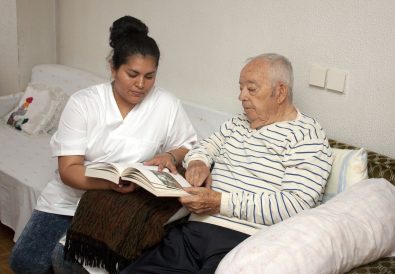
Alex Rojas of Los Angeles CA is a business development leader and public agency executive whose work intersects operations, infrastructure, and community services. Since 2011 he has served as principal consultant with Greenvale Consulting Services in Los Angeles, focusing on revenue generation, market expansion, sales growth, and process optimization. In 2020 he joined the Central Basin Municipal Water District in Commerce, where he serves as general manager and chief operating and executive officer, directing projects that include delivering recycled water across approximately 80 miles of infrastructure. His experience includes marketing plan execution, public outreach, and building cross functional teams. He earned a doctor of organizational leadership from the University of Southern California and a master of science in water engineering and management from the University of Colorado, Boulder. These roles provide broad exposure to planning and budgeting that relate closely to cost estimation in construction.
Common Cost Estimation Techniques In Construction
Cost estimation is an important aspect of construction project management. It serves as the financial foundation for other planning, resource allocation, and scheduling. Having an accurate estimate ensures that the project remains financially viable, aligns with stakeholder expectations, and reduces the risk of delays and cost overruns. Because the construction industry involves variables like material prices, environmental conditions, labor rates, and even regulatory shifts, there is a need to adopt efficient cost estimation measures to ensure strategic foresight and operational control.
Selecting the right cost estimation technique depends on the available information, desired accuracy, resources, and the stage of the project. Analogous estimating or top-down estimating is a commonly used estimation technique. It uses the cost from similar previous projects as the basis for estimating the cost of the new project. With this method, construction managers adopt a previously completed project and adjust the cost to reflect differences in scale, inflation, and location, among other variables. Construction managers often use this approach when the current project has little to no detailed design or specifications. They also use it to set rough budgets and decide whether to continue with the project at hand.
Bottom-up estimating or detailed estimation involves breaking the project into detailed work packages or tasks. Each line item, like labor, equipment, and material, is estimated individually and then aggregated to form the total cost. This technique is most appropriate when there is an advanced design in place and the construction specifications are clear. Bottom-up estimating has the greatest accuracy among traditional methods. It also provides major stakeholders with clear visibility into the actual cost of different parts of the process.
Parametric estimating is an estimation technique that makes use of statistical relationships between historical and project variables. For instance, this technique uses measurable parameters like cost per square foot or cost per housing unit. This method is ideal for construction projects that have repeatable elements, like the construction of standard office or residential units.
Three-point estimating is a method that acknowledges the uncertainty often present in construction projects by considering three possible outcomes: the optimistic or best-case scenario, the most likely outcome, and the pessimistic or worst-case scenario. These values are combined using a weighted average formula to produce a more realistic cost estimate. This approach is especially useful during the early design stages or when project conditions are uncertain, such as when soil conditions, weather, or design details may change.
One of the major strengths of three-point estimating is that it offers a probabilistic view of project costs rather than a single static figure. This helps teams prepare for uncertainty and allocate contingency funds more realistically. It also encourages critical thinking about what could go right or wrong, prompting more detailed risk discussions among stakeholders. However, the method relies heavily on professional judgment, as defining what is “optimistic” or “pessimistic” can be subjective.
Unit cost estimating, also known as resource-based estimating, focuses on determining costs per specific unit, such as per square yard, cubic yard, or item, and then multiplying these costs by the estimated quantities. This method works best for projects that involve repetitive tasks and when accurate quantity take-offs are available. It offers a practical balance between detail and efficiency, allowing for easier updates when material costs or quantities change. However, unit rates can fluctuate over time and across locations, and the method may overlook indirect costs like site overhead or mobilization.
About Alex Rojas of Los Angeles CA
Alex Rojas leads operations and strategy in Southern California’s water sector and consulting space. He is general manager of the Central Basin Municipal Water District, which serves roughly 2 million people, and he directs recycled water delivery across about 80 miles of infrastructure while executing marketing and outreach plans with partner cities and agencies. He has been a principal consultant with Greenvale Consulting Services since 2011. Dr. Rojas holds a doctorate in organizational leadership from USC and a master’s in water engineering and management from the University of Colorado, Boulder.





